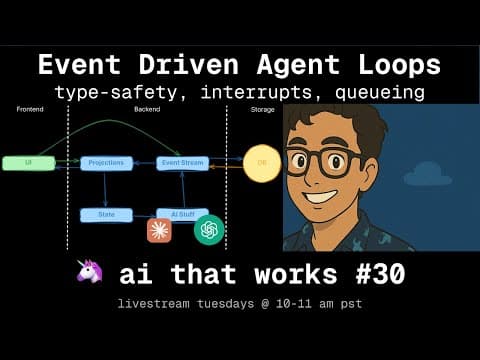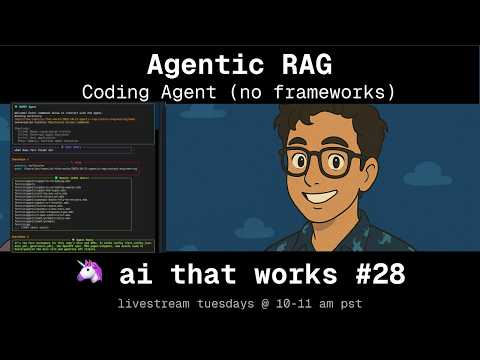🦄 Ralph Wiggum under the hood: Coding Agent Power Tools
We've talked a lot about how to use context engineering to get more out of coding agents. In this episode, we dive deep on the Ralph Wiggum technique and why this different approach can reshape your coding workflow. We explore how Ralph handles greenfield work, refactors, and spec generation—surprise: it's all about higher-quality context engineering.
Project Details
Open in GitHubRalph Wiggum under the hood: Coding Agent Power Tools
Ralph Wiggum is a way to think about coding agents, not a product feature or a recipe. We explore a very small outer harness that runs an agent in a tight loop: take one meaningful step, check yourself, commit, repeat. It’s intentionally simple so you can see where the wins and the failure modes come from.
Note: This is a conceptual exploration. It’s not “do this for your production app today.” Use it to sharpen your mental model and to design better outer harnesses and back pressure.
What we covered
- Why short loops beat “please keep working” prompts
- How tests, types, and builds act as back pressure (and why it matters)
- Context budgeting so you stay in the smart zone instead of drowning the model
- Reverse mode: deriving specs first, then generating forwards
- Trade-offs across languages (C, Rust, Zig) and why speed vs. soundness is a real choice
Key ideas
- One-loop, one-step. Exit. Rerun. Don’t convince the model to work longer; bound the work instead.
- Back pressure is your governor. Strong typing or strong checks make the loop honest.
- Specs before code. One bad spec line can waste tens of thousands of tokens.
- Code is disposable. Ideas, specs, and harness design carry the value.
When to use it (and when not)
Use when:
- You can define a crisp spec and fast checks (tests, build, typecheck)
- You want an unattended scaffold or a vertical slice in a messy repo
- You’re cloning functionality via clean-room specs (get legal advice)
Avoid when:
- The task truly needs long contiguous context with weak feedback
- You need human review at every step for liability/correctness
What we built in the demo
- A Next.js to‑do app driven by a rolling implementation plan
- Commits gated by tests/build; minimal secrets configured by hand
- Observed self-termination, resets, and plan regeneration as steering tools





























